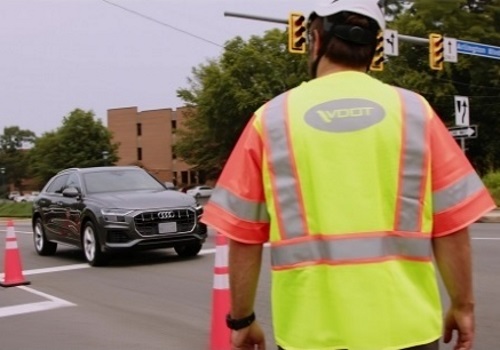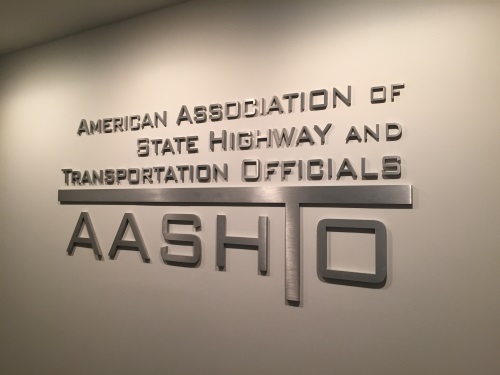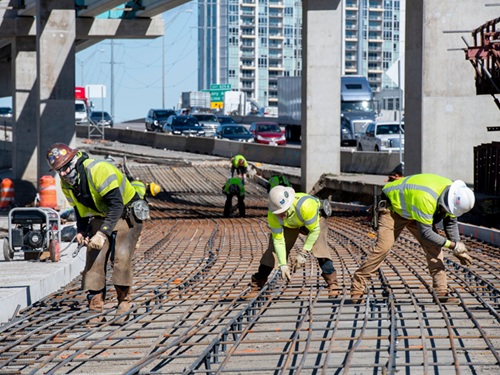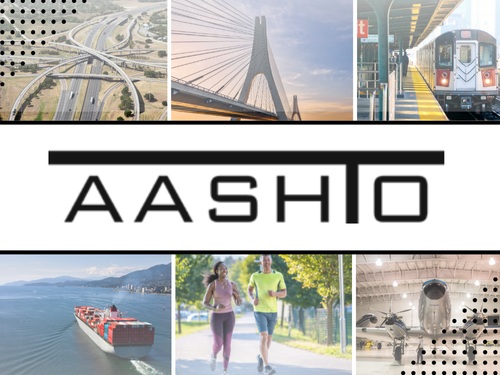In a 10-page comment letter sent to the U.S. Department of Transportation on July 26, the American Association of State Highway and Transportation Officials offered a detailed list of research projects worthy of receiving Advanced Research Projects Agency-Infrastructure or ARPA-I grants.
[Above image by AASHTO]
“Undergirding AASHTO’s comments is a broad re-envisioning of the national transportation system that state departments of transportation can advance individually and collectively; a vision of a transportation system focused on connecting communities, moving people and goods, and meeting customer needs at all scales – from local to global – delivered as a partnership between state DOTs and other public, private, and civic organizations,” the letter said.
“The vision includes six aspirational goals that describe how the community-centered transportation system should function based on these shared values: (1) safe and secure, (2) accessible and affordable, (3) seamless and reliable, (4) healthy and thriving, (5) clean and sustainable, and (6) agile and resilient,” the group noted. “Included in AASHTO’s comments for each section are technological investments that would accelerate and facilitate this vision.”

AASHTO noted in its letter that new infrastructure technologies and strategies “offer a pathway” to making the nation’s transportation network safer, more efficient, and more resilient. For example, the organization supports “systemic solutions” involving engineering, technology, behavioral change, and community design to reduce fatalities such as the broad deployment of vehicle-to-everything or V2X systems and Intelligent Transportation System advances such as dynamic message signs, peer-to-peer in-vehicle warnings, and wrong way driving detection, just to name a few.
“In looking to the development of advanced infrastructure construction materials and methods, ARPA-I should focus on new materials that are stronger, lighter, and more durable than existing materials, construction methods that improve efficiency, and new technologies that can be used to monitor and maintain infrastructure,” AASHTO added. “These advances may be prioritized to upgrade heavily used corridors like the Interstate highway system with new designs and materials.”
AASHTO also noted that another research area key to overcoming the “long-term challenges” facing the U.S. transportation system is the development of a nationwide digital infrastructure to support mobility and connectivity needs. That includes providing more support for Advanced Air Mobility or AAM systems, drone traffic management, new Geographic Information System or GIS mapping systems to provide better real-time navigation capabilities to autonomous vehicles, and many others.
“State DOTs also recognize the urgency and need to address climate change given its harmful impacts to the natural and built environment,” AASHTO noted. “Improving energy efficiency and reducing emissions throughout the transportation system lifecycle, from construction to operations, is a key focus area. In addition, using the transportation system to generate and store energy, such as solar highways and pavement sensors, offers the potential to transform the resilience of our infrastructure.”
The organization ultimately stressed in its letter, just as the transportation infrastructure is a means to an end – that end being the movement of people and goods in support of the social and economic well-being of the country – research on the use and operation of the transportation infrastructure must be an integral part of ARPA-I.
That’s why AASHTO is encouraging research into “more options for how we connect communities, regions, and megaregions to meet system user needs, including next-generation transit, advanced air mobility, and high-speed ground transportation – including aspects like safety, convenience, accessibility, affordability, efficiency, and sustainability.”



